NURS FPX 6410 Exploration of Regulations and Implications for Practice Paper Example
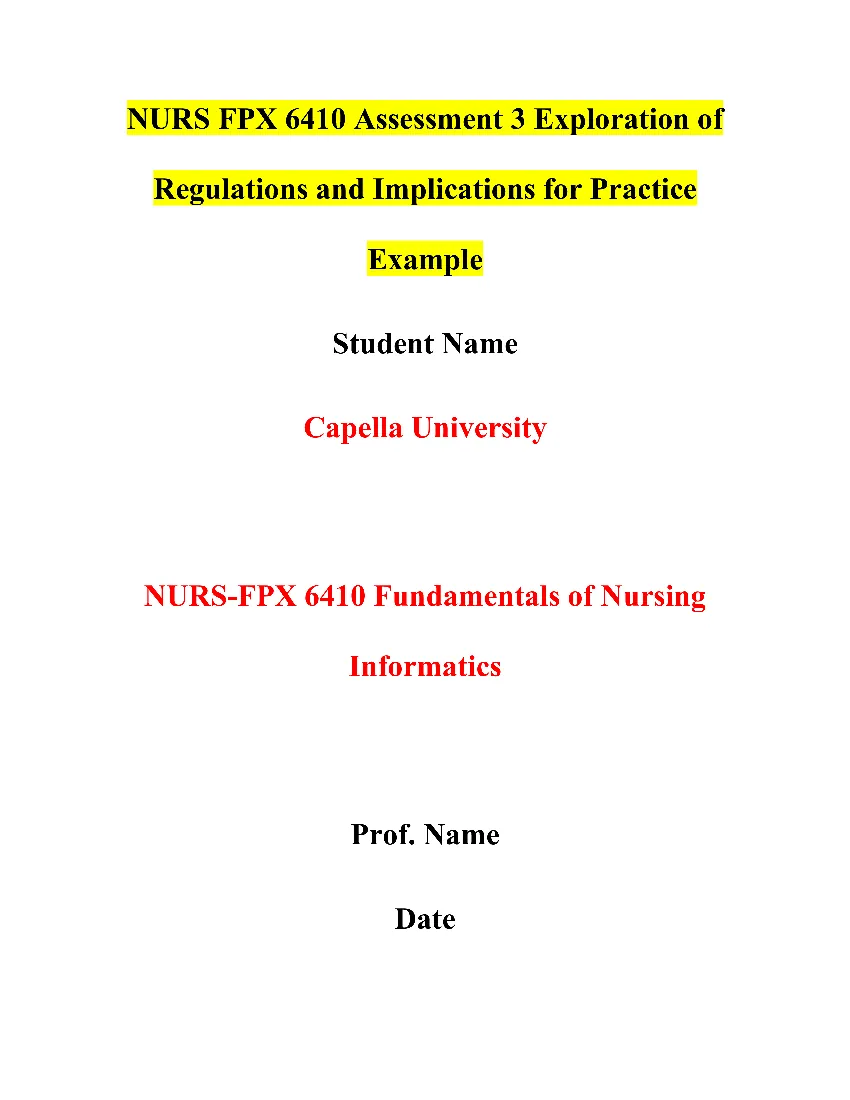 NURS FPX 6410 Assessment 3 Exploration of Regulations and Implications for Practice
NURS FPX 6410 Assessment 3 Exploration of Regulations and Implications for Practice
NURS FPX 6410 Exploration of Regulations and Implications for Practice Paper Assignment Brief
Course: NURS-FPX 6410 Fundamentals of Nursing Informatics
Assignment Title: Assessment 3 Exploration of Regulations and Implications for Practice
Assignment Overview
In this assignment, you will analyze an informatics project related to a safety initiative within a healthcare organization. The focus will be on examining the outcomes of the chosen informatics project and considering ethical and regulatory considerations, as well as standards of practice.
Understanding Assignment Objectives
The objective of this assignment is to evaluate the impact of an informatics project on patient safety and healthcare outcomes. By examining the chosen project from various perspectives, including ethical, regulatory, and safety considerations, you will demonstrate your understanding of the complexities involved in implementing informatics solutions in healthcare settings.
The Student’s Role
As a student, your role is to critically analyze the informatics project of your choosing and assess its effectiveness in addressing safety issues within a healthcare organization. You will need to identify stakeholders involved, outline the intended goals of the initiative, and evaluate its actual outcomes. Additionally, you will analyze the project using specific categories, including safe practice, ethical considerations, regulatory considerations, and standards of practice.
Competencies Measured
This assignment measures several key competencies essential for nursing informatics professionals:
- Apply theoretical frameworks and models of nursing informatics to professional nursing practice.
- Apply standards of practice in nursing informatics to address gaps in practice in healthcare organizations.
- Analyze how regulatory bodies, rules, regulations, and requirements impact the use of health information technology in nursing practice.
- Integrate ethical and legal practices into delivering quality healthcare using technology in various environments.
- Communicate with internal and external stakeholders to ensure accurate and efficient transmission of data, information, and plans.
- Communicate as a practitioner-scholar, consistent with the expectations of a nursing professional.
You Can Also Check Other Related Assessments for the NURS-FPX 6410 Fundamentals of Nursing Informatics Course:
NURS FPX 6410 Assessment 1 Presentation to Informatics Staff Example
NURS FPX 6410 Assessment 2 Executive Summary to Administration Example
NURS FPX 6410 Exploration of Regulations and Implications for Practice Paper Example
Introduction
The focal point of this inquiry revolves around the execution of a fall prevention initiative, as previously recommended for City Hospital, New York, in a preceding evaluation. The primary objective of this initiative is to enhance patient safety by mitigating the incidence of falls, thereby diminishing healthcare expenses associated with fall-related injuries. To ensure a successful rollout, the initiative will adopt a comprehensive approach, encompassing the utilization of the Plan-Do-Study-Act (PDSA) model, a HIPAA-compliant spreadsheet, evidence-based guidelines, data trending, and regulatory adherence.
Utilization of the PDSA model will facilitate the testing of interventions and the integration of feedback to foster ongoing improvement (Minnesota Department of Health, 2019). To ensure patient confidentiality, a HIPAA-compliant spreadsheet will be employed. Furthermore, evidence-based guidelines and standards of practice established by national organizations such as the Joint Commission and CDC will guide the initiative. Regular data analysis will be conducted to identify trends and patterns related to falls.
The effectiveness of the initiative will be assessed through baseline data establishment and ongoing progress evaluation. Regulatory information supporting informatics and compliance with other pertinent regulations will also be upheld. By employing this comprehensive approach, the effectiveness and efficiency of the fall prevention initiative will be ensured, ultimately enhancing patient safety for this vulnerable demographic.
Safety Issue Associated with the Incidence of Falls
Patient falls pose a significant safety issue at City Hospital, New York. According to recent statistics, falls contribute to more than half of all patient injuries, with those aged 60 and above being particularly vulnerable (Appeadu & Bordoni, 2022). The consequences of falls can be severe, ranging from fractures to head injuries and even fatalities (Vaishya & Vaish, 2020). For instance, Mrs. Smith’s case, an elderly patient who suffered a hip fracture after a fall, illustrates the potential complications, including prolonged recovery periods and increased healthcare costs.
Mrs. Smith’s situation highlights the urgent need for proactive measures to prevent falls. Various risk factors contribute to falls, including underlying health conditions, medications, and environmental factors. Therefore, an effective fall prevention program should address all these aspects.
An essential component of fall prevention is conducting a thorough fall risk assessment upon patient admission. This assessment helps identify patients at risk of falling, allowing for targeted interventions. It should involve evaluating the patient’s medical history, medication list, and mobility status. Based on the assessment results, interventions such as bed alarms, non-slip footwear, and mobility aids can be implemented. Additionally, environmental modifications, such as maintaining dry, clutter-free floors and adequate lighting, are crucial. Handrails should be available where necessary, and patients should receive education on fall prevention strategies, along with encouragement to seek assistance when needed. Consistent tracking and analysis of fall-related data are vital for evaluating the effectiveness of fall prevention strategies and identifying areas for improvement (Appeadu & Bordoni, 2022).
Stakeholders Involved
The implementation of a fall prevention program involves various stakeholders, including hospital administrators, healthcare providers, patients, families, and regulatory bodies.
Hospital Administrators:
Hospital administrators play a crucial role in ensuring the success of the program by providing necessary resources and support. This includes allocating funds for training and equipment and establishing policies to ensure compliance with regulations.
Healthcare Providers:
Healthcare providers are another essential group responsible for identifying patients at risk of falls, implementing prevention strategies, and monitoring outcomes. Adequate training in evidence-based guidelines is crucial to delivering high-quality care to older patients (Joint Commission, CDC).
Patients and Families:
Patients and their families are also important stakeholders in the implementation process. They need to understand the purpose of the fall prevention program and actively participate in their care by following instructions and reporting concerns promptly.
Regulatory Bodies:
Regulatory bodies such as the Joint Commission and the Centers for Disease Control and Prevention establish guidelines and regulations to ensure patient safety and quality of care. Compliance with these regulations is essential for the success of the fall prevention program (Joint Commission, CDC).
Intended Goal of the Initiative
The main aim of the fall prevention program is to decrease falls and improve the safety of patients aged 60 and above. Falls are a significant cause of injury in this age group, leading to reduced quality of life, increased healthcare costs, and higher mortality rates. To achieve this goal, the program will utilize the Plan-Do-Study-Act (PDSA) model to test interventions and make continuous improvements based on feedback. Additionally, it will set up a secure HIPAA-compliant spreadsheet for storing, monitoring, and analyzing fall-related data. The program will rely on evidence-based guidelines to shape its fall prevention strategies, and it will establish baseline data and regularly measure progress to track improvements. Compliance with regulations will be ensured to maintain the highest levels of safety for patients.
Analyzing the Initiative
Assessing the impact and effectiveness of the fall prevention initiative requires evaluating its alignment with regulations, ethical principles, and safety standards. This entails utilizing evidence-based guidelines, implementing the Plan-Do-Study-Act (PDSA) model, and adhering to regulatory bodies like HIPAA. Ethical considerations, such as patient confidentiality and informed consent, are also critical aspects to consider. Measuring the program’s success in reducing falls and enhancing patient outcomes provides a comprehensive assessment of its effectiveness. A multifaceted analysis from various perspectives enhances understanding of the initiative’s impact and its achievement of goals.
Safe Practices
Ensuring adherence to safety standards and regulations involves implementing evidence-based guidelines and utilizing the PDSA model (Gonzalez, 2021). Additionally, maintaining patient confidentiality and safety through a HIPAA-compliant system for data storage and access restrictions is crucial. Regular monitoring and analysis of fall-related data enable tracking of progress and identification of areas for improvement.
Ethical Considerations
Adherence to ethical values such as beneficence, non-maleficence, and fairness in patient treatment is imperative (Ahmed et al., 2020). Ethical considerations in the fall prevention program include ensuring patients are fully informed about the program, protecting their privacy and confidentiality, and preventing unnecessary risks or harm. Addressing potential conflicts of interest and ensuring program accessibility and equity are also essential ethical considerations.
Regulatory Considerations
Evaluating the fall prevention intervention from a regulatory perspective involves assessing compliance with legal and regulatory requirements (Mitchell, 2020). Ensuring adherence to HIPAA and OSHA regulations, maintaining patient confidentiality, and providing training for safe care delivery are vital. Regular audits and assessments help identify areas for improvement and ensure ongoing compliance with regulatory requirements.
Standard of Practice
Assessing adherence to standards of practice involves ensuring compliance with HIPAA and ANA Nursing Informatics standards (Strudwick et al., 2019). Secure management and storage of patient data, training healthcare workers to use technology safely and effectively, and ensuring compatibility of software and equipment with regulatory requirements are crucial for compliance and efficiency.
Analyzing the Initiative Utilizing PDSA Model
The Plan-Do-Study-Act (PDSA) model serves as a framework for improving quality in healthcare by implementing and assessing interventions. When applied to the fall prevention program, this model helps identify areas for enhancement and ensures the program effectively reduces falls (Taylor, 2020).
Planning Phase
During the planning stage, the fall prevention program sets out its objectives, defines its goals, identifies the target population, and determines the necessary resources for implementation. Additionally, potential barriers to success are recognized. In our scenario, this includes identifying patients at risk of falls (Jones & Manias, 2019).
Implementation Phase
In the implementation phase, the fall prevention program puts the plan into action, which involves training healthcare workers and deploying required technology and equipment. This includes utilizing patient monitoring systems and medication management software to reduce fall risks (Dykes et al., 2021).
Evaluation Phase
During the evaluation phase, the fall prevention program assesses its effectiveness in reducing falls. This involves gathering and analyzing data on patient outcomes, staff compliance, satisfaction levels, and any adverse events that occur (Raban et al., 2020).
Adjustment Phase
In the adjustment phase, the fall prevention program makes changes based on the evaluation results. This includes modifying the program to better suit the needs of patients, staff, and other stakeholders, as well as updating policies or procedures to enhance patient safety and outcomes (Zhang & Song, 2021).
In the realm of nursing informatics, the PDSA model is used to identify and evaluate the application of technology and informatics solutions to improve patient care and safety. It ensures effective technology implementation while promptly addressing any concerns or issues that arise (Staggers & Thompson, 2020).
Conclusion
In conclusion, the implementation of a comprehensive fall prevention initiative is essential for enhancing patient safety, particularly for individuals aged 60 and above. By employing evidence-based guidelines, utilizing the Plan-Do-Study-Act (PDSA) model, and ensuring regulatory compliance, healthcare facilities can effectively mitigate the incidence of falls and reduce associated healthcare costs. Ethical considerations, such as patient confidentiality and informed consent, must also be prioritized to uphold patient rights and dignity. Through collaborative efforts involving hospital administrators, healthcare providers, patients, families, and regulatory bodies, the success of fall prevention programs can be maximized, ultimately improving patient outcomes and quality of care.
References
Ahmed, A., Panhwar, M. S., Ali, M., & Sabir, M. (2020). Ethical considerations in research. Journal of Liaquat University of Medical and Health Sciences, 19(01), 62-67.
Appeadu, D. O., & Bordoni, B. (2022). Falls. In StatPearls [Internet]. StatPearls Publishing.
Dykes, P. C., Stade, D., Dalal, A., Paz, S. H., Lowe, H., & Bates, D. W. (2021). Strategies for managing alarm and alert fatigue in the ICU. Critical care medicine, 49(4), 612-617.
Gonzalez, C. (2021). The role of technology in patient safety and quality improvement. In Healthcare Technology Safety (pp. 207-222). Springer, Cham.
Jones, J., & Manias, E. (2019). Supporting medication management in adult intensive care: A mixed-methods exploration of nurses’ information behaviors and information preferences. Journal of advanced nursing, 75(5), 1055-1067.
Joint Commission. (n.d.). National Patient Safety Goals. Retrieved from https://www.jointcommission.org/
Mitchell, S. E. (2020). Foundations for clinical and translational science: Ethics, law, and regulatory aspects. Academic Press.
Raban, M. Z., Westbrook, J. I., & Coiera, E. (2020). A systematic review of the effectiveness of interruptive medication prescribing alerts in hospital CPOE systems to change prescriber behavior and improve patient safety. International journal of medical informatics, 138, 104098.
Staggers, N., & Thompson, C. B. (2020). The evolution of definitions for nursing informatics: A critical analysis and revised definition. Journal of the American Medical Informatics Association, 27(3), 471-478.
Strudwick, G., Kuziemsky, C., Booth, R., & Clark, M. (2019). Collaborative approach to nursing informatics. In Nursing Informatics: People, Processes, and Technology in Health Care (pp. 1-20). Springer, Cham.
Taylor, J. (2020). A meta-analysis of the efficacy of alerts and reminders for improving adherence to antibiotic prescribing guidelines. JAMIA Open, 3(2), 290-299.
Vaishya, R., & Vaish, A. (2020). Understanding and managing osteoporosis-related fractures. Indian journal of endocrinology and metabolism, 24(4), 358.
Zhang, J., & Song, Y. (2021). The effectiveness of clinical decision support systems for diagnostic performance in primary care: A systematic review and meta-analysis. Annals of Family Medicine, 19(1), 67-74.
Detailed Assessment Instructions for the NURS FPX 6410 Exploration of Regulations and Implications for Practice Assignment
Exploration of Regulations and Implications for Practice
Write a 6–8 page APA-formatted paper with 5–7 scholarly references in which you analyze an informatics project of your own choosing related to a safety initiative.
My Informatics Project – Automated Medication Reconciliation System: Develop an informatics system that automates the medication reconciliation process, ensuring accurate and up-to-date medication lists for patients. This system can integrate with electronic health records (EHRs) and alert healthcare providers to potential medication discrepancies, promoting patient safety.
Introduction
Informatics enable an organization to be dynamic rather than static. They provide a constant source of data for measuring outcomes and initiating and revising practices and policies to further improve those outcomes. Stepping back to comprehensively review initiatives and share the results provide the evidence-based practice examples that continue to drive positive outcomes.
Instructions
In this assessment, you will create an APA-formatted paper to examine the outcomes of an informatics project of your choosing from the overall perspective of a safety initiative. Also, include ethical and regulatory considerations as well as standards of practice.
- Provide a general overview of the informatics project. Identify:
- The safety issue involved.
- The stakeholders involved in this practice.
- The intended goals of the initiative.
- The actual outcomes of the initiative.
- Analyze the initiative using the following categories:
- Safe practice.
- Ethical considerations.
- Regulatory considerations.
- Standards of practice.
- Analyze this example of safe practice within the framework of an informatics model.
Additional Requirements
- Title page:Include your name, course, date, and faculty name.
- Reference:5–7 scholarly sources (using parenthetical citations) that support the policy and guidelines. Additional references may be used.
- Written communication:Written communication is free of errors that detract from the overall message.
- APA formatting:Resources and citations are formatted according to current APA style and formatting. Use a running head, title on the first line of the first page of text, a brief introduction, a minimum of Level 1 headings used for each section of the paper, and conclusion.
- Length of paper:6–8 typed, double-spaced pages not including title page or references.
- Font and font size:Times New Roman, 12 point.
Submit your paper to the assignment area for grading.
Review Exploration of Regulations and Implications for Practice scoring guide prior to submission to ensure you address all required grading criteria.
RESOURCES
ANA Standards of Practice
- American Nurses Association. (2015). Nursing informatics: Scope and standards of practice (2nd ed.) .
- “Standards of Nursing Informatics Practice,” pages 67–95.
MSN Program Library Research Guide
The resources provided for this assessment are suggested. You may use other resources of your choice to prepare for this assessment; however, you will need to ensure that they are appropriate, credible, and valid. The MSN Program Library Research Guide can help direct your research.
Informatics and Safe Practice
- McGonigle, D., & Mastrian, K. (2022). Nursing informatics and the foundation of knowledge(5th ed.). Jones & Bartlett. Available in the courseroom via the VitalSource Bookshelf link.
- Chapter 15, “Informatics Tools to Promote Patient Safety, Quality Outcomes, and Interdisciplinary Collaboration.”
- Strategies for Developing a Safety Culture.
- Informatics Technologies for Patient Safety.
- Role of the Nurse Informaticist.
- van Hoeven, L. R., de Bruijne, M. C., Kemper, P. F., Koopman, M. M. W., Rondeel, J. M. M., Leyte, A., Koffijberg, H., Janssen, M. P., & Roes, K. C. B. (2017). Validation of multisource electronic health record data: An application to blood transfusion data . BMC Medical Informatics and Decision Making, 17, 1–10.
Ethical Practice in Achieving Quality Outcomes
- American Nurses Association. (2015). Nursing informatics: Scope and standards of practice (2nd ed.) .
- “Ethics in Nursing Informatics,” pages 49–52.
- McGonigle, D., & Mastrian, K. (2022). Nursing informatics and the foundation of knowledge(5th ed.). Jones & Bartlett. Available in the courseroom via the VitalSource Bookshelf link.
- Chapter 5, “Ethical Applications of Informatics.”
Regulatory and Compliance Considerations
- American Nurses Association. (2015). Nursing informatics: Scope and standards of practice (2nd ed.) .
- “Functional Areas of Nursing Informatics.”
- Compliance and Integrity Management, page 22.
- Quality and Performance Improvement, page 32.
- Safety, Security and Environmental Health, page 34.
- Trends in Regulatory Changes and Quality Standards, page 62.
- McGonigle, D., & Mastrian, K. (2022). Nursing informatics and the foundation of knowledge (5th ed.). Jones & Bartlett. Available in the courseroom via the VitalSource Bookshelf link.
- Chapter 8, “Legislative Aspects of Nursing Informatics: HIPAA, HITECH and Beyond.”
Competencies Measured
By successfully completing this assessment, you will demonstrate your proficiency in the following course competencies and assessment criteria:
- Competency 1: Apply theoretical frameworks and models of nursing informatics to professional nursing practice.
- Analyze the practice example using an informatics model.
- Competency 2: Apply standards of practice in nursing informatics to address gaps in practice in a health care organization, practice setting, or community.
- Apply standards of practice to a specific example within the context of safe practice.
- Competency 3: Analyze how regulatory bodies, rules, regulations, and requirements impact the use of health information technology in nursing practice and organizational operations.
- Assess the impacts of regulatory constraints with a specific practice example within the context of applying safe practice.
- Competency 4: Integrate ethical and legal practices into delivering quality health care using technology in various environments.
- Critique the structure for ethical and legal practices when using the science of informatics.
- Competency 5: Communicate with internal and external stakeholders to ensure accurate and efficient transmission of data, information, and plans.
- Demonstrate accurate and efficient transmission of data, information, and plans to key stakeholders.
- Competency 6: Communicate as a practitioner-scholar, consistent with the expectations of a nursing professional.
- Communication is HIPAA compliant and professional, clearly stated, and free of grammar and spelling errors
Unlock Your Academic Success with ReliablePapers.com: Your Premier Nursing Essay Writing Service
Are you struggling with complex nursing informatics topics, tight deadlines, or specific assignment instructions? Look no further! At ReliablePapers.com, we pride ourselves on being the best nursing paper writing service in the industry, dedicated to ensuring your academic success.
Our expert nursing essay writers are here to save you time and help you achieve the best grades possible. We understand that some nursing topics can be tougher than others, and that’s why we offer custom nursing papers tailored to your unique requirements. Say goodbye to the worry of submitting a plagiarized paper – our pro writers are committed to crafting original and customized nursing essays just for you.
What sets us apart is not only our top-notch quality but also our affordability. Our online nursing papers come at very competitive prices, making them accessible to all college students. Whether you need a comprehensive nursing essay, coursework assistance, or guidance on your nursing assignment, we’ve got you covered.
With ReliablePapers.com, you can expect an outstanding nursing essay paper written from scratch, regardless of the topic or deadline. We prioritize your success, allowing you to focus on what matters most to you while we take care of your academic needs.
Don’t miss out on the opportunity to excel in your nursing studies. Trust the professionals at ReliablePapers.com – your reliable source for nursing paper writing services. Order now and experience the difference!
Hire an Expert Paper Writer on Any Subject, Any Topic, Any Deadline! Submit your paper instructions by placing your order here to get started!


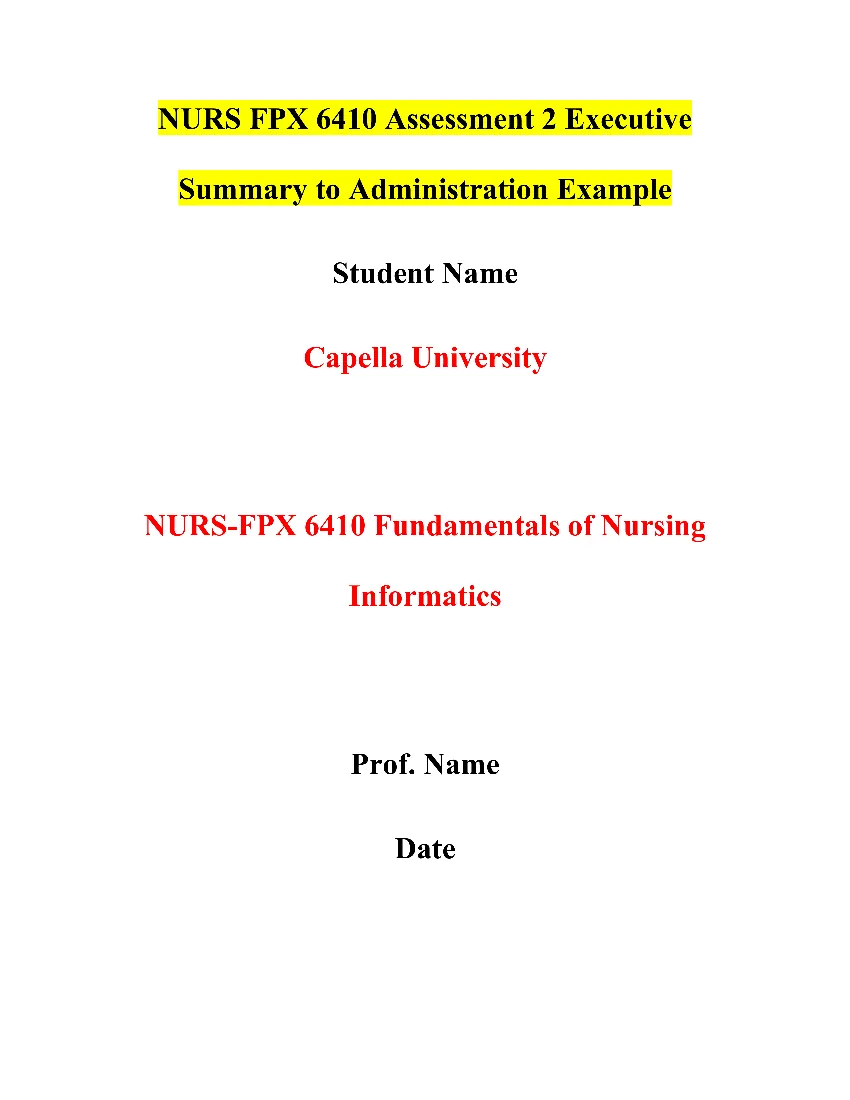 NURS FPX 6410 Assessment 2 Executive Summary to Administration
NURS FPX 6410 Assessment 2 Executive Summary to Administration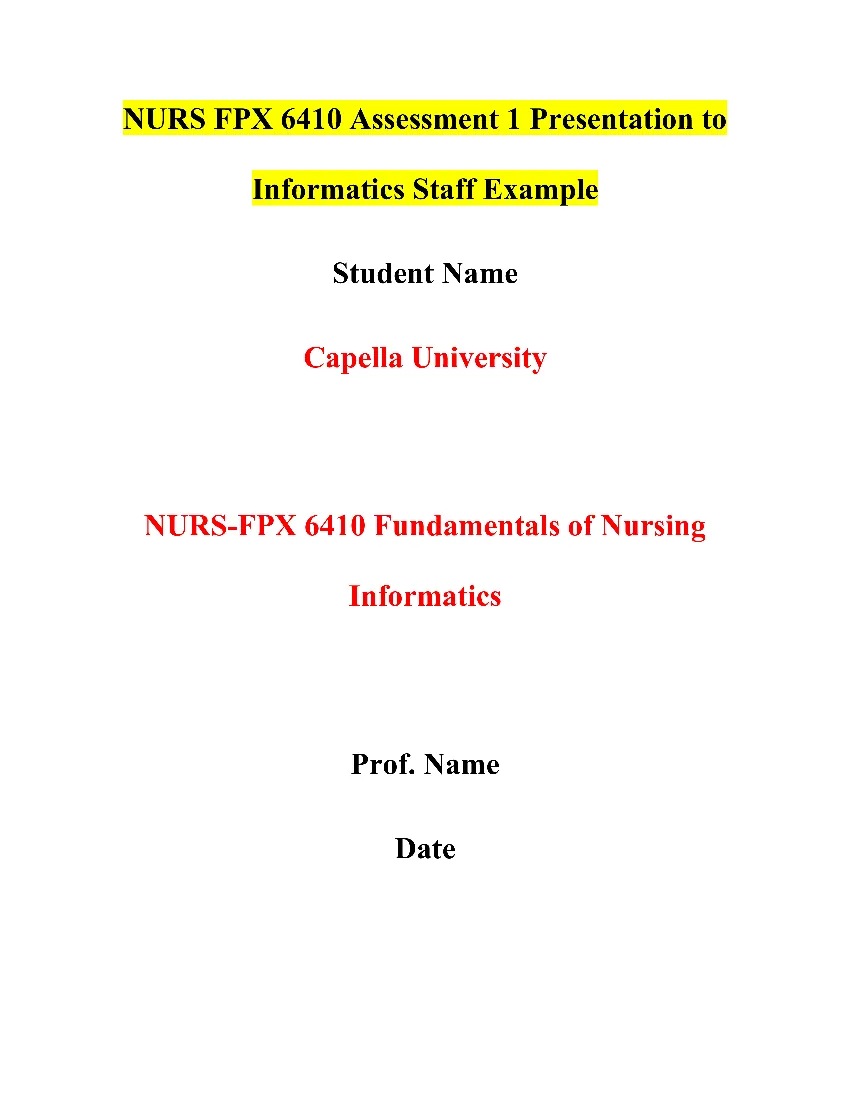 NURS FPX 6410 Assessment 1 Presentation to Informatics Staff
NURS FPX 6410 Assessment 1 Presentation to Informatics Staff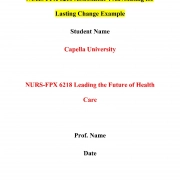 NURS FPX 6218 Assessment 4 Advocating for Lasting Change
NURS FPX 6218 Assessment 4 Advocating for Lasting Change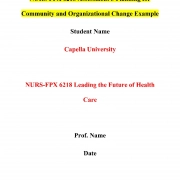 NURS FPX 6218 Assessment 3 Planning for Community and Organizational Change
NURS FPX 6218 Assessment 3 Planning for Community and Organizational Change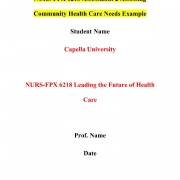 NURS FPX 6218 Assessment 2 Assessing Community Health Care Needs
NURS FPX 6218 Assessment 2 Assessing Community Health Care Needs NURS FPX 6218 Assessment 1 Proposing Evidence-Based Change
NURS FPX 6218 Assessment 1 Proposing Evidence-Based Change NURS FPX 6216 Assessment 4 Preparing and Managing a Capital Budget
NURS FPX 6216 Assessment 4 Preparing and Managing a Capital Budget NURS FPX 6216 Assessment 3 Budget Negotiations and Communication
NURS FPX 6216 Assessment 3 Budget Negotiations and Communication NURS FPX 6216 Assessment 2 Preparing and Managing an Operating Budget
NURS FPX 6216 Assessment 2 Preparing and Managing an Operating Budget